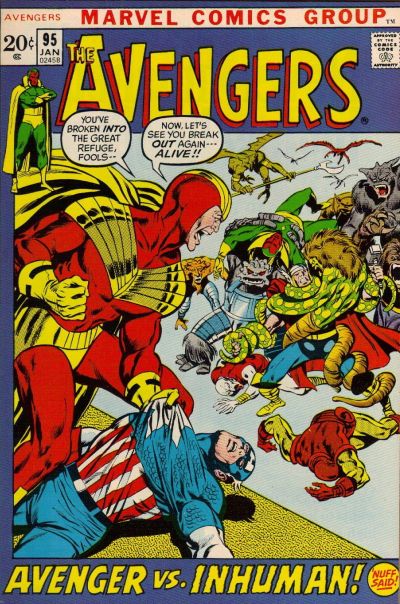
The Brave and the Bold #112 (Apr.-May, 1974)

 By my reckoning, DC Comics’ The Brave and the Bold was one of the first comic book titles I ever spent my own money on (for the record, it was preceded only by Superman, Detective Comics, Green Lantern, Justice League of America, Flash, and Lois Lane). I bought my first issue, #64, in December, 1965 — drawn in, no doubt, by its irresistible Gil Kane cover — and BatB soon became one of my most consistent regular purchases as a nascent comics fan. No, I didn’t buy every single issue, but that was true of virtually every other title as well (the sole exception in those early days being Justice League of America, to which I quickly subscribed). The ongoing appeal of the book, of course, was that you were always guaranteed at least two superheroes for the price of one (sometimes, as with issue #65’s team-up between the Flash and the Doom Patrol, you got even more). That wasn’t quite as good a deal as JLA, which might give you as many as ten costumed crusaders cavorting in the same story… but it was still pretty sweet. Read More
By my reckoning, DC Comics’ The Brave and the Bold was one of the first comic book titles I ever spent my own money on (for the record, it was preceded only by Superman, Detective Comics, Green Lantern, Justice League of America, Flash, and Lois Lane). I bought my first issue, #64, in December, 1965 — drawn in, no doubt, by its irresistible Gil Kane cover — and BatB soon became one of my most consistent regular purchases as a nascent comics fan. No, I didn’t buy every single issue, but that was true of virtually every other title as well (the sole exception in those early days being Justice League of America, to which I quickly subscribed). The ongoing appeal of the book, of course, was that you were always guaranteed at least two superheroes for the price of one (sometimes, as with issue #65’s team-up between the Flash and the Doom Patrol, you got even more). That wasn’t quite as good a deal as JLA, which might give you as many as ten costumed crusaders cavorting in the same story… but it was still pretty sweet. Read More









